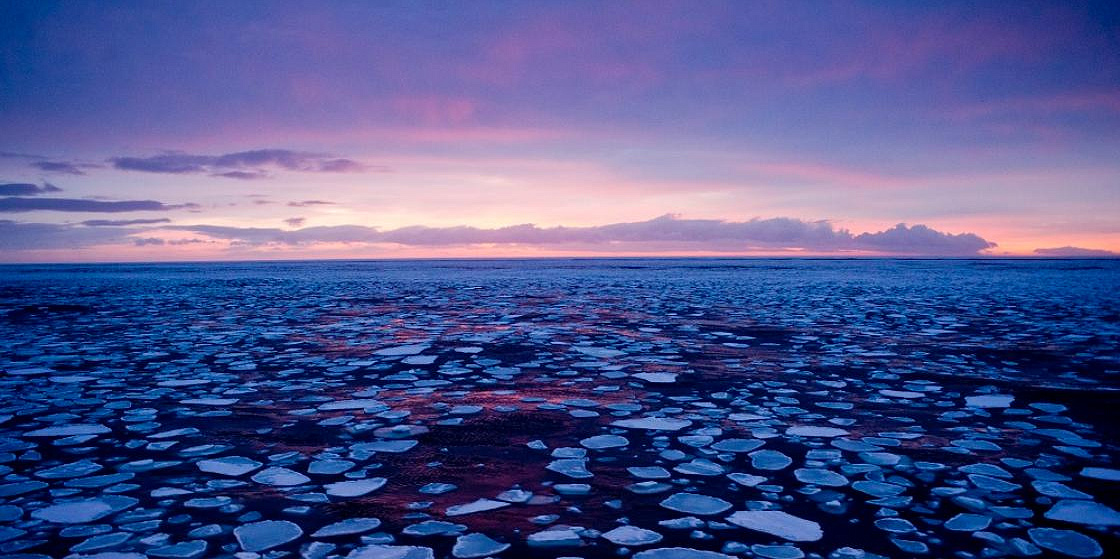
Photo: Shtrick Vadim/GeoPhoto.ru
Arctic Weekly: NSR, Wildfire Challenge, and Warming Factors
The Russian government is determined to transform the Northern Sea Route (NSR) into an international shipping lane navigable all year round. This strategic initiative was discussed this 19 July at a meeting of the Council for Strategic Development and National Projects. Authorities believe the route should become ready for international cargo traffic by 2030; the government expects that by 2030, its freight amount will exceed 150 million tons, including 30 million tons of cargo transit.
To this end, the government and big business, through PPP mechanisms, take coordinated steps to build up a fleet of modern ships fit for navigating in high latitudes, along with upgrading and developing port infrastructure so as to meet the growing needs of the Arctic transit lane.
For these purposes, the government plans to allocate a total of about USD 10 billion in 2021-2030.
And now on to other news.
Russian Arctic: fighting blazes. The Russian Arctic is facing a challenge of coping with large-scale fires which have stricken the vast sparsely populated northern areas of this country. The Yakut Republic, the worst-hit arctic region of Russia, has to deal with hundreds of forest fires affecting about 680 thousand hectares. More than 2.3 thousand people take part in battling the flames, including several hundred volunteers. The situation is challenging in Karelia: about 6,000 hectares of forest were affected by fires; the state of emergency was imposed on the region. Despite the fact that, so far, the country’s emergency system proved to be capable of delivering a swift and quick response, there is still much to do to improve our preparedness and ability to deal with climate-related challenges in the High North, including via international dialog and circumpolar cooperation.
Learning about warming. Russian researchers made a considerable progress in determining factors that contribute to warming in the High North. According to a recent study by the MSU, the process of ice thawing in the Atlantic sector of the Arctic may be speeded up by an influx of warm waters from the lower latitude Atlantic.
Lavna update. Lavna, the construction project of a new greenfield commercial sea port of the same name to be built on the western coast of the Kola Bay in the Murmansk region, is nearing its implementation phase. According to the management of the port, initial construction works will commence in the near future.
Funding for the North Pole. Russia’s federal government has additionally allocated 1 billion rubles to fund the construction of the North Pole, a self-propelled High North research platform. Its builder’s trials being scheduled for 2022, the government authorized the Federal Service for Hydrometeorology and Environmental Monitoring to oversee the final construction stage.
Carbon-neutral nickel. Nornickel, a major Russian metal producer plans to ship the trial batch of internationally certified carbon-neutral nickel. The batch of 5,000 metric tonnes of high-grade cathodes was produced by Nornickel’s Kola Division operating the company’s industrial facilities located in the Russian Arctic. Nornickel plans to release up to 10,000 tonnes of carbon-neutral nickel this year.
Arctic satellites. Arctica-M, the first Russian meteorological satellite built to monitor climate and weather in the high latitudes is about to complete its flight trial program, Roscosmos says. According to Roscosmos officials, the satellite is performing well. The second satellite of this class, which is currently being assembled, is expected to be launched in 2023.
NPT in Yakutia. The Ministry for Far East and Arctic came up with a draft regulation on the establishment of an interagency working group for the construction of a nuclear power plant in the Yakut Republic (Russia). The power plant is expected to provide energy for a to-be-developed gold mining project and neighboring off-grid settlements in the Russian Arctic.
Secure telecoms. A team of engineers from a Siberian-based private company and the Moscow Institute of Physics and Technology launched a joint project to design and develop a secure satellite communication terminal to be used in the High North.
Brought to you by Alexander Stotskiy, PORA.
To this end, the government and big business, through PPP mechanisms, take coordinated steps to build up a fleet of modern ships fit for navigating in high latitudes, along with upgrading and developing port infrastructure so as to meet the growing needs of the Arctic transit lane.
For these purposes, the government plans to allocate a total of about USD 10 billion in 2021-2030.
And now on to other news.
Russian Arctic: fighting blazes. The Russian Arctic is facing a challenge of coping with large-scale fires which have stricken the vast sparsely populated northern areas of this country. The Yakut Republic, the worst-hit arctic region of Russia, has to deal with hundreds of forest fires affecting about 680 thousand hectares. More than 2.3 thousand people take part in battling the flames, including several hundred volunteers. The situation is challenging in Karelia: about 6,000 hectares of forest were affected by fires; the state of emergency was imposed on the region. Despite the fact that, so far, the country’s emergency system proved to be capable of delivering a swift and quick response, there is still much to do to improve our preparedness and ability to deal with climate-related challenges in the High North, including via international dialog and circumpolar cooperation.
Learning about warming. Russian researchers made a considerable progress in determining factors that contribute to warming in the High North. According to a recent study by the MSU, the process of ice thawing in the Atlantic sector of the Arctic may be speeded up by an influx of warm waters from the lower latitude Atlantic.
Lavna update. Lavna, the construction project of a new greenfield commercial sea port of the same name to be built on the western coast of the Kola Bay in the Murmansk region, is nearing its implementation phase. According to the management of the port, initial construction works will commence in the near future.
Funding for the North Pole. Russia’s federal government has additionally allocated 1 billion rubles to fund the construction of the North Pole, a self-propelled High North research platform. Its builder’s trials being scheduled for 2022, the government authorized the Federal Service for Hydrometeorology and Environmental Monitoring to oversee the final construction stage.
Carbon-neutral nickel. Nornickel, a major Russian metal producer plans to ship the trial batch of internationally certified carbon-neutral nickel. The batch of 5,000 metric tonnes of high-grade cathodes was produced by Nornickel’s Kola Division operating the company’s industrial facilities located in the Russian Arctic. Nornickel plans to release up to 10,000 tonnes of carbon-neutral nickel this year.
Arctic satellites. Arctica-M, the first Russian meteorological satellite built to monitor climate and weather in the high latitudes is about to complete its flight trial program, Roscosmos says. According to Roscosmos officials, the satellite is performing well. The second satellite of this class, which is currently being assembled, is expected to be launched in 2023.
NPT in Yakutia. The Ministry for Far East and Arctic came up with a draft regulation on the establishment of an interagency working group for the construction of a nuclear power plant in the Yakut Republic (Russia). The power plant is expected to provide energy for a to-be-developed gold mining project and neighboring off-grid settlements in the Russian Arctic.
Secure telecoms. A team of engineers from a Siberian-based private company and the Moscow Institute of Physics and Technology launched a joint project to design and develop a secure satellite communication terminal to be used in the High North.
Brought to you by Alexander Stotskiy, PORA.
23 July 2021




